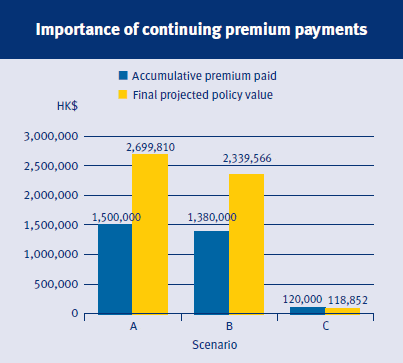
Premium payments in fixed dollar amount at regular intervals can achieve the highest possible returns on long-term investment plans
Standard Life’s investment plans are an excellent vehicle for long-term savings and investments to achieve objectives that need to be realised in the distant future. You can suggest this form of investment plan to clients who want to save up for their children’s education, a distant retirement or make life-style changes later in life.
It is important to explain to clients that the main benefit of buying units in fixed dollar amount at regular intervals is dollar cost averaging, or averaging out the cost of investment fund units on the long run. When the markets are down and unit prices are low more units can be bought, while fewer units will be purchased when prices go up.
As a result, in a fluctuating market the client actually pays less on average for a unit than the unit’s average price for the period. On the other hand, a large lump sum invested at the peak of the market may lose too much value to yield a positive return if prices start to fall.
While regular contributions can be made in easily affordable amounts that put no strain on the investor over a long period of time, you should emphasise that dollar cost averaging will get the best results of investment over the whole investment period.
Investing long-term provides better benefit
To benefit from the dollar cost averaging, it is important to start early and persevere with regular instalments. It can be demonstrated that investing a regular sum for 25 years can yield considerably more than investing the same amount in larger instalments for 10 years. This is because starting to save early, dollar cost averaging has a longer time span to work in favour of the client.
If the client pays the premiums regularly, the charges on the account will be lower after the Initial Contribution Period (ICP) and a larger proportion of the premium will be invested, making a considerable difference to the policy value at maturity.
It is important to review the clients’ situation from time to time. They should be reminded to keep in mind the importance of long-term returns and persevere with payments, rather than consider short-term convenience and make rush decisions.
Suspending or reducing premium decreases policy value
If the client cannot stick to the payment schedule, options such as suspending or reducing the payment for a couple of years should be discussed, including the consequences.
Clients should be reminded that according to the policy provisions, certain fees and charges will have to be regularly paid, even if premium payment has been suspended or reduced. This can eat into the principal and seriously reduce the final policy value and any bonuses awarded.
For example, investing $5,000 for 25 years can achieve a projected profit of $1,199,810. Taking a two-year contribution holiday, you may save $120,000 but your projected profit will be shorter by $240,244, if we calculate with the same rate of return per annum. The effect of an early surrender or withdrawal of the plan can be even more severe.
If the client still wishes to suspend or reduce payment for a period of time, calculations should be made to ensure that enough has been contributed to cover the fees and charges during the period of non-payment.

